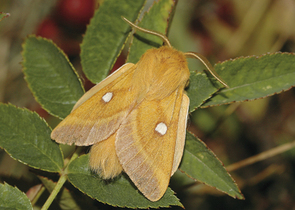Nature Conservation 2/2008 — 22. 4. 2008 — Research, Surveys and Data Management
Monitoring Butterflies and Moths Protected under the European Community's Habitat Directive – Recent
novinky a problémy z posledních let

Směrnice o stanovištích číslo 92/43/EEC (dále jen Směrnice) zavazuje Českou republiku k ochraně celkem šestnácti druhů denních a nočních motýlů (čtyři v příloze II, sedm v příloze IV, pět v obou přílohách).
The contribution summarises recent (post-2001) findings on the Lepidoptera (butterflies and moths) species that are in the Czech Republic protected by the European Community's Habitats Directive. The monitoring is centrally coordinated, utilising the records obtained from targeted surveys of known sites and from non-intensive records from the butterfly and moth recording scheme. Regarding moths, the Willowherb Hawkmoth (Proserpinus proserpina) is doing rather well. Adults occur in low densities in warm areas, their larvae develop at warm wet sites, often of the ruderal character. Eriogaster catax has dramatically declined when compared with its historical distribution. The species is now restricted to a handful of populations in southernmost Moravia, all inhabiting former pastures that are now being overgrown by scrub. The Jersey Tiger Moth (Callimorpha quadripunctaria) remains relatively widely distributed, but as in the case of Eriogaster catax seems to be retreating from open woodlands to late successional stages of abandoned pastures. In case of butterflies, there are no major problems with the Southern Festoon (Zerynthia polyxena) which is doing well at warm ruderal sites within its distribution area in southern Moravia. The Clouded Apollo (Parnassius mnemosyne) continues to be threatened by overgrowth of open woodlands. Increased survey intensity has led to (re)discoveries of its several populations, but at the same time populations in the Chřiby Hills and at the Morava – Dyje/Thaya Rivers confluence must be considered lost. The Apollo (Parnassius apollo) remains restricted to the one re-introduced population at Štramberk. The Danube Clouded Yellow (Colias myrmidone) was extirpated during the last few years from its former stronghold in the White Carpathians Mts., the reason being too intensive management of the grassland protected areas there. The species must now be considered extinct in the Czech Republic. Similarly, the Fenton's Wood White (Leptidea morsei) has not been rediscovered despite huge efforts and must now be considered extinct. The Marsh Fritillary (Euphydryas aurinia) remains extant in colonies numbering thousands of individuals in western Bohemia, but multiple local colonies have been either lost or considerably diminished by inappropriate management, mostly because of too frequent hay cutting. The Scarce Fritillary (Euphydryas maturna) has been restricted to its single wood, fluctuating between 200 and 2500 adults per annum. Restoration of more favourable site conditions, i.e. return to coppicing with a standard, must be the top policy priority. Sadly, this practice is rejected by the site owners and forestry community in general. The situation is even more complicated in the case of the Woodland Brown (Lopinga achine), another species restricted to a single wood and requiring the historic conditions resulting from past woodland grazing. The Sudeten Ringlet (Erebia sudetica) is still doing well at sub-alpine elevations of the Hrubý Jesenik Mts., with many populations inhabiting woodland clearings having recently been confirmed. The Large Copper (Lycaena dispar) continues to expand its range and can be now found everywhere across Moravia. It has also returned to southern Bohemia and has colonised eas-tern and northern Bohemia for the first time. The prospects of the Large Blue (Phengaris arion) remain extremely pessimistic across most of the country, except for the Vsetín region where a vast metapopulation exists owing to the locally retained non-intensive pastoral agriculture. The two Phengaris species feeding on the Great Burnet (Sanguisorba officinalis), namely the Scarce Large Blue (P. teleius) and Dusky Large Blue (P. nausithous), both still occur in multiple colonies across the country. Nevertheless, many sites, including some proposed as Sites of Community Importance, have been lost due to inappropriately designed mowing regimes.
Název připojené galerie
Quisque egestas velit non nulla fermentum, aliquet pharetra nunc malesuada. Nullam molestie vel diam non tincidunt. Sed pulvinar lacinia nunc et consectetur. Duis varius leo ac ex scelerisque, ullamcorper eleifend massa consectetur. Nullam in metus ac arcu pellentesque venenatis ac id lorem. Nulla nec ipsum sed enim sodales blandit a sit amet ex.






